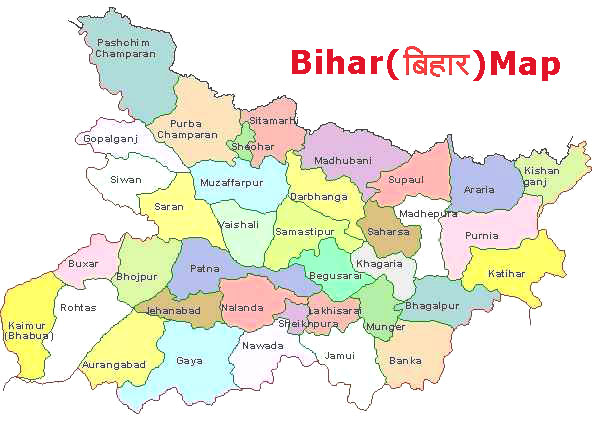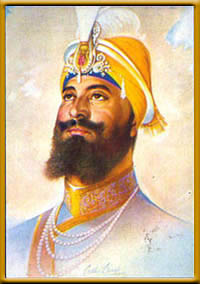Facts about Bihar – Bihar is a state in East India. It is the 13th largest state in India. The third largest state of India by population, it is also contiguous with Uttar Pradesh to its west, Nepal to the north, the northern part of West Bengal to the east, with Jharkhand to the south. The name Bihar is derived from the Sanskrit and Pali word, Vihara (Devanagari: विहार), which means “abode”. The Bihar plain is split by the river Ganges which flows from west to east. In ancient and classical India, Bihar was considered a centre of power, learning, and culture. From Magadha arose India’s first empire, the Maurya empire, as well as one of the world’s most widely adhered-to religions, Buddhism. Since the late 1970s, Bihar has lagged far behind other Indian states in terms of social and economic development because of Govt.’s ignorance towards Bihar.

pic courtesy – Bihar Jagran
Historical Facts about Bihar
- Regions of Bihar—such as Magadha, Mithila, Anga, and Vaishali—are mentioned in religious texts and epics of ancient India.
- The Haryanka dynasty, founded in 684 BC, ruled Magadha from the city of Rajgriha (modern Rajgir). The two well-known kings from this dynasty were Bimbisara and his son Ajatashatru.
- The Haryanka dynasty was followed by the Shishunaga dynasty. Later the Nanda Dynasty ruled a vast tract stretching from Bengal to Punjab.
- The Nanda dynasty was replaced by the Maurya Empire, India’s first empire.
- The Mauryan Empire, which originated from Magadha in 325 BC, was founded by Chandragupta Maurya, who was born in Magadha.
- The Mauryan emperor, Ashoka, who was born in Pataliputra (Patna) is believed to be one of the greatest rulers in the history of the world.
- The Gupta Empire, which originated in Magadha in 240 AD, is referred to as the Golden Age of India in science, mathematics, astronomy, commerce, religion, and Indian philosophy.
- The tenth and the last Guru of Sikhism, Guru Gobind Singh was born in Patna.
- Bihar remained a part of the Bengal Presidency of British India until 1912 when the province of Bihar and Orissa was carved out as a separate province.
- Gautam Buddha attained Enlightenment at Bodh Gaya, a town located in the modern day district of Gaya in Bihar.
- Vasupujya, the 12th Jain Tirthankara was born in Champapuri, Bhagalpur.
- Vardhamana Mahavira, the 24th and the last Tirthankara of Jainism, was born in Vaishali around the 6th century BC.
Major Cities in Bihar
Government of Bihar
| Governor | Kashi Nath Tripathi |
| Chief Minister | Nitish Kumar |
| Chief Justices of Bihar | Keshri Nath Tripathi |
| High Court | Patna |
| Capital | Patna |
During the 19th century, when the standard of living in Bihar worsened under British rule, many Biharis had to migrate as indentured labourers to the West Indian islands, Fiji, or Mauritius. During this time, many sad plays and songs called “bihara” became very popular in the Bhojpur area.
State Symbols
| Animal | Gaur |
| Bird | Indian Roller |
| Tree | Peepal |
| Flower | Kachnar |
| Music form found in Bihar | Sohar, Sumangali, Ropnigeet, Katnigeet |
| Main Festival | Chhath |
Seats on Politics
| Number of Districts | 38 |
| Assembly and Council Seats | 243 + 75 (Bicameral) |
| Lok Sabha Seats | 40 |
| Rajya Sabha Seats | 16 |
| Date of Creation | April 1, 1936 |
| First Chief Minister | Krishna Singh |
| First Governor | James Sifton |
Districts of Bihar
Araria, Madhepura, Arwal, Madhubani, Aurangabad, Monghyr, Banka, Muzaffarpur, Begusarai, Nalanda, Bhagalpur,Nawada, Bhojpur, Patna, Buxar, Purnea, Darbhanga, Rohtas,Saharsa, Gaya, Samastipur, Gopalganj, Saran, Jamui, Shiekhpura, Jehanabad, Sheohar, Kaimur, Sitamarhi, Katihar, Siwan, Khagaria, Supaul, Kishanganj, Vaishali, Lakhisarai, East Champaran and West Champaran.
Economic Facts
Mineral Resources found: Limonite, Kaolin, Limestone, Mica, Fuller’s Earth.
Main Industries situated: Cotton Spinning Mills, Sugar Mills, Jute Mills and Leather Industry.
Agriculture Products yield: Rice, Wheat, Maize, Pulses, Oilseeds, Tobacco, jute, Onions, Chillies, and Potato.
Culture of Bihar
Main Fairs of Bihar: Sonepur Cattle Fair, Gaya-Pitrapaksha Mela, Chatth Puja, Holi Mela.
Main Festivals of Bihar: Chattha, Sarhul, Karma etc.
Main Music of Bihar: Sohar, Sumangali, Ropnigeet, Katnigeet.
Paintings of Bihar: Patna Kalam, Madhubani Painting, Traditional wall painting of Mithiliya.
Dances of Bihar : Jatra, Karma, Natua, Jadur.
Major Rivers in Bihar
Ganga River, Koshi River, Gandak River, Bagmati River, Budhi Gandak River, Mahananda River, Kamla-Balan River, Punpun River, Sone River, Saryu River, Bhutahi-Balan River, Falgu River, Kareh River, Karmnasha River, Uttari Koyal River, Panchane River, Chandan River, Sakri River, Ban Ganga River, Harhar River, Mohana River, Kiul River, Badua River, Belhama River, Billasi River, Chir River, Kao River, Gangi River, Koa River, Bhena River and Mahi River.
National Park:
Valmiki National Park
Wild Life Sanctuaries in Bihar
- Barela Jheel Salim Ali Bird Wild Life Sanctuary
- Bhimbandh Wild Life Sanctuary
- Gautam Budha Wild Life Sanctuary
- Kanwarjheel Wild Life Sanctuary
- Kaimur Wild Life Sanctuary
- Kusheshwar Asthan Bird Wild Life Sanctuary
- Nagi Dam Wild Life Sanctuary
- Nakti Dam Wild Life Sanctuary
- Pant (Rajgir) Wild Life Sanctuary
- Udaipur Wild Life Sanctuary
- Valmiki Wild Life Sanctuary
- Vikramshila Gangetic Dolphin Wild Life Sanctuary
UNESCO World Heritage site in Bihar
There is only one World Heritage site in Bihar and that is Mahabodhi Temple Complex at BODHGAYA: Mahabodhi Temple Complex at Bodh Gaya (Buddha Gaya), spread over an area of 4.86 hectares (12.0 acres) was inscribed in the UNESCO World Heritage List as a unique property of cultural and archaeological importance. The first temple was built by Emperor Ashoka in the 3rd century BC (260 BC) around the Bodhi Tree Ficus religiosa (to the west of the temple). The structures have been built in bricks. Revered and sanctified as the place where Siddhartha Gautama Buddha was enlightened in 531 BC at age 35, and then propagated his divine knowledge of Buddhism to the world.
The main temple is 50 m in height, built in Indian architectural style, dated between 5th and 6th centuries, and it is the oldest temple in the Indian sub-continent built during the “Golden Age” of Indian culture credited to the Gupta period.
Some Famous Personalities of Bihar
- Aryabhatta
- Chanakya
- Ashoka
- Guru Gobind Singh
- Rajendra Prasad (First President of India)
- Jai Prakash Narayan
- Ramdhari Singh Dinkar (Hindi Poet)
- Bismillah Khan (Shehnaai Maestro)
- Girija Prasad Koirala (4 times Nepal’s PM)
- Ashok Kumar (Legendary veteran Actor)
Trivia and Facts about Bihar
- Almost 58% of Biharis are below the age of 25, giving Bihar the highest proportion of young people compared to any other state in India.
- Since 2010, Bihar has celebrated its birthday as Bihar Diwas on 22 March.
- Bihar is the home of the oldest Hindu temple of India- Mundeshwari. The temple is always abuzz with the clanging of bells around the four-headed Shiv. It is a wonderful artistic expression of male-female union.
- Bihar was an epicentre of knowledge, culture, power, and learning. The city Pataliputra, now Patna is the oldest continuously inhabited city in India. It is also the home of the world’s oldest university- Nalanda University, which attracts students from all over the world.
- Nalanda library attracted students from Iran, Korea, Japan, Persia, Greece, China and was set on fire by the army of Bakhtiyar Khilji under his command.
- Bihar is often regarded as a state of labourers, people leave their place and work as labourers for money. However, the fact that a record number of civil aspirants are selected from Bihar cannot be overlooked too. Bihar, therefore, is considered the second most IAS churner factory!
- Patna, Bihar is the home to world’s longest WiFi range- 20 km.
- Bihar has produced a number of IAS officer than Kerala, Karnataka, Tamil Nadu, Andhra and Gujarat combined.


















